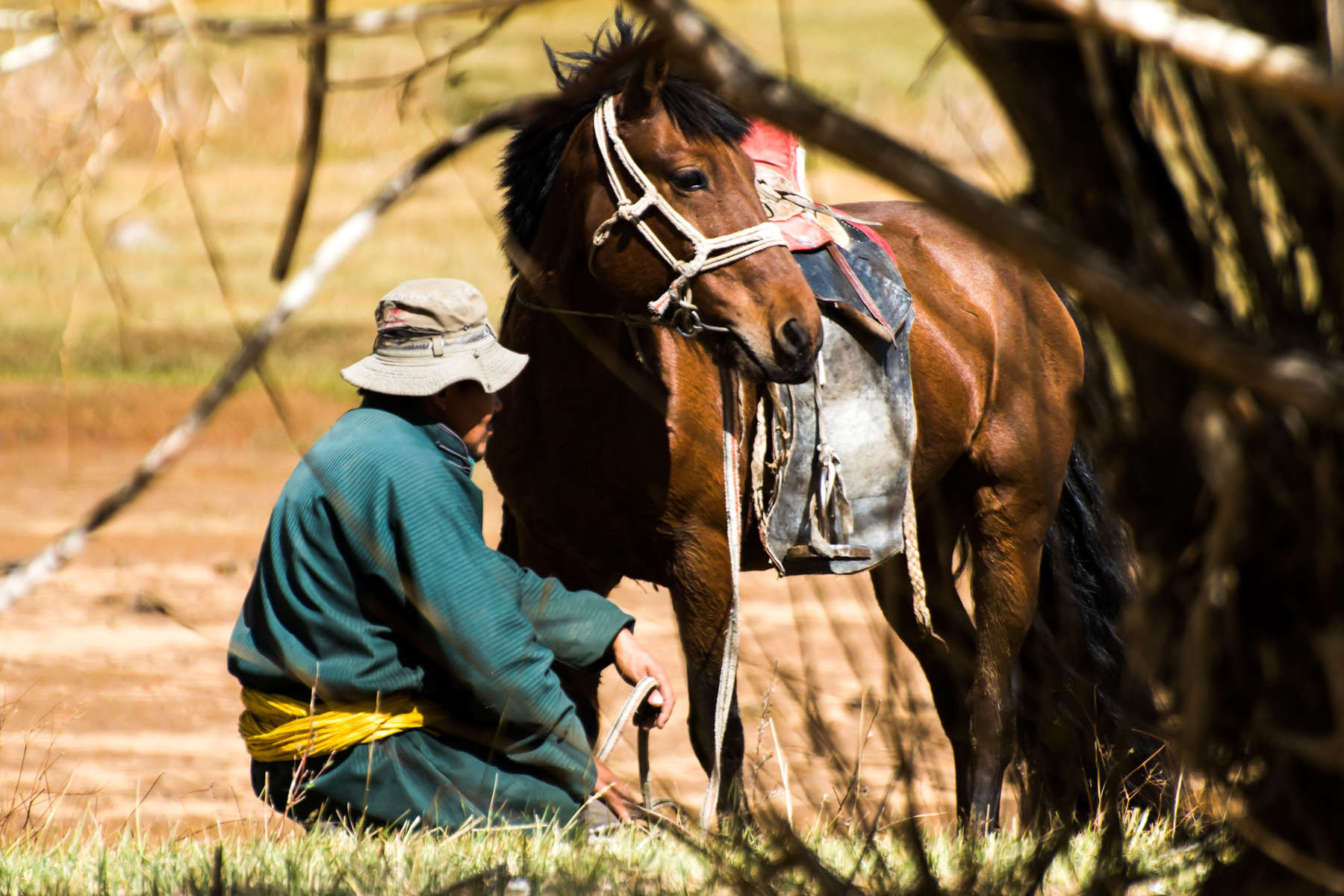The Mongolian horse
History
The Mongolian horse was one of the earliest to be domesticated and there is evidence of nomads riding horses on the central Asian steppes since 2,000 BC. The Mongolian horse is believed to be the founding stock for many other horse breeds in Asia including the Akhal Teke. The breed is purported to be unchanged since the time of Genghis Khan (12th and 13th century) and traditional Mongolian nomads still hold more than 3 million animals, which outnumbers the country's human population.
Mongol horses are best known for their role as war steeds during the time of Genghis Khan. The soldiers relied on their horses for transport, food, drink and spiritual power - they preferred to ride lactacting mares so that they could use them as milk animals as well as on the battlefield. The Mongol horse made an excellent war horse because of its hardiness, stamina, self sufficiency and ability to forage.
Mongolians have a variety of spiritual beliefs regarding the horse - it is believed that the mane contains the horses spirit and strength, so the manes of stallions remain uncut; mares milk has been used in purification ceremonies and there are rituals they perform when a horse dies to ensure his spirit remains content.
Breed characteristics
Mongolian horses are short and stocky, with strong legs and a large head. They range in size from 12 - 14 hands and despite their small size they have great stamina and can gallop for 10km without a break. As they live in a semi-wild state they have strong, hard hooves and rarely experience foot problems.
The different regions produce slight differences in breed type with desert horses having larger feet, mountain horses being shorter and stronger, and steppe horses being the tallest and fastest. The different provinces also have colour preferences, with the Darkhad region preferring grey horses and the Nyamgavaa preferring bay or black. Herdsmen breed for colour and speed before conformation and temperament.
Mongolian horses have thick coats for resistence against the cold winters and a thick mane and tail. They typically eat nothing except grass and require little water, drinking only once a day. In winter they eat snow for water and then the grass underneath for sustenance. They can typically lose up to 30% of their bodyweight during the harsh winters and must regain this during the summer if they are to survive the following year. Despite their semi-feral lifestyle they can live to be 20-40 years old.
Riding a Mongolian horse is an incredible experience - and a highlight of our riding holidays in Mongolia!

